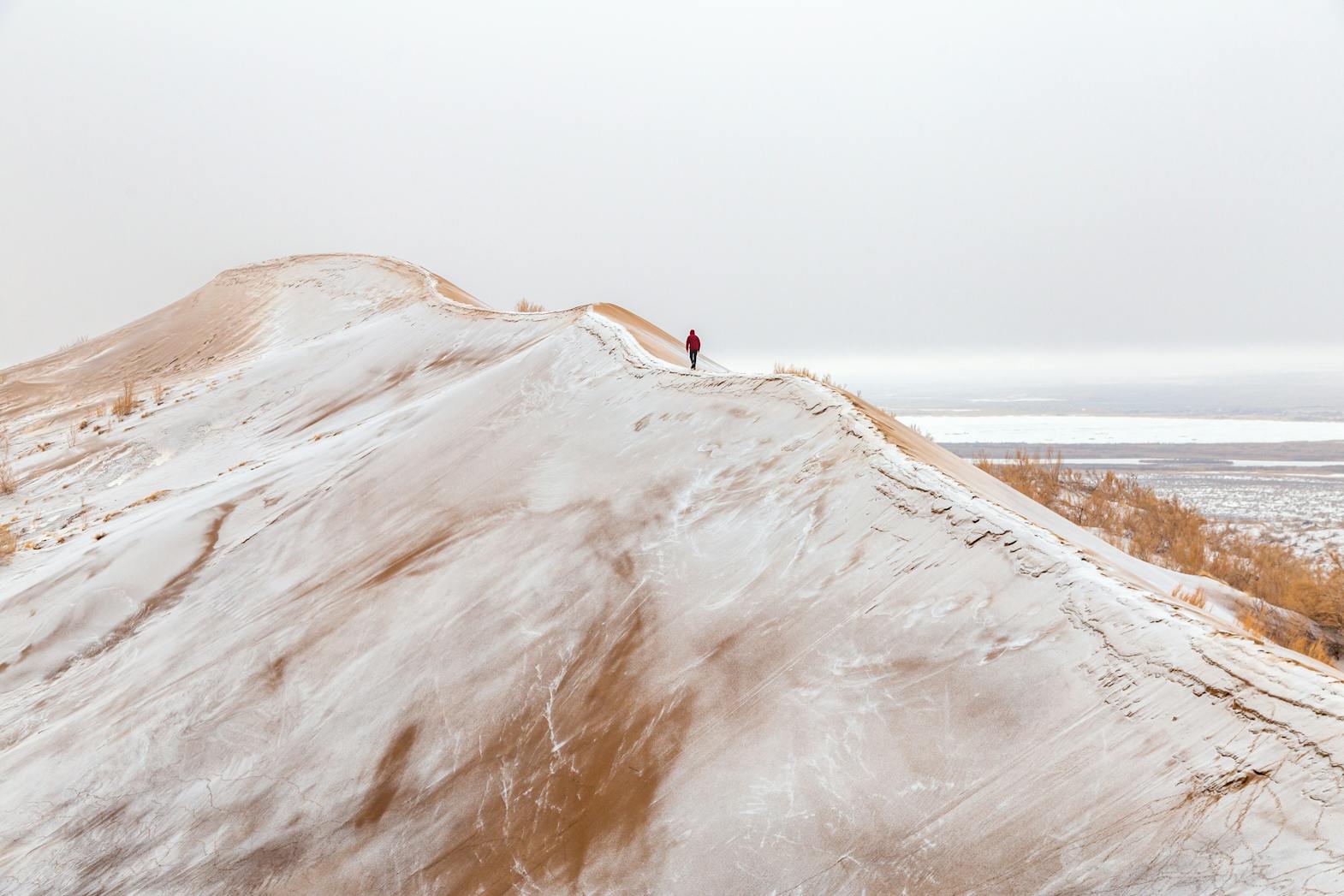
On November 3, 2024, the Saudi Arabian desert of Al-Nafūd in Al-Jawf experienced its first-ever recorded snowfall. Social media buzzed after many shared photos and videos reacting to the strange phenomenon. They featured bizarre scenarios, like camels treading cautiously on ice.
READ: Sunscreen ingredients found in Arctic snow The United Arab Emirates National Center of Meteorology says the unusual weather event stemmed from a low-pressure area from the Arabian Sea. First time in history Saudi Arabian desert turns into winter wonderland after first-ever snowfall. For the first time in recorded history Saudi Arabia’s Al-Jawf region experienced snowfall turning the dry desert into a winter scene.
pic.twitter.com/X2XCGBt3aY The region’s temperature can spike up to 55°C, so the sudden emergence of frost was truly surprising.
UK-based news site Metro reported the low-pressure area brought moist air into this arid location. This phenomenon caused thunderstorms, hail and rainfall across Saudi Arabia and neighboring UAE. CNBC shared a UAE Meteorology Center advisory for residents to prepare for more inclement weather.
The unusual condition can reduce visibility and disrupt travel in the Saudi Arabian desert. Contrary to popular belief, deserts can experience snow. For example, the Sahara has had numerous recorded instances of frost over the last decades.
News website The Conversation explains that snow requires cold temperatures and moist air to form. The recent low-pressure area can have drawn cool, moist air towards the Al-Nafūd desert, allowing snowfall. Snow can form over higher ground like the Atlas Mountains in Morocco.
If the air is cold enough, moisture can freeze into snow crystals and blanket the region in white. The World Bank says West Asia is one of the regions most susceptible to climate-related impacts. Despite the recent snowfall, projections indicate rising average temperatures.
Soon, it could lead to increasingly erratic and extreme weather patterns. The Saudi Arabian desert wasn’t the only location with unusual weather. Subscribe to our daily newsletter By providing an email address.
I agree to the Terms of Use and acknowledge that I have read the Privacy Policy . Firstpost reported that Riyadh, the capital of Saudi Arabia, struggled with heavy rainfall and eventually flooding..














